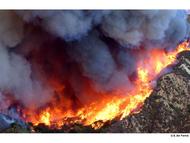Climate “Reparations” - ORIGINAL CONTENT
- By:
- Edward A. Reid Jr.
- Posted On:
- Jan 10, 2023 at 7:00 AM
- Category
- Climate Change
The UN COP27 concluded in mid-November with an agreement to work toward establishment of a funding mechanism to compensate developing countries for “loss and damage” resulting from the effects of anthropogenic climate change. This concept is problematic on several levels.
First, weather events such as floods, droughts, tropical cyclones, tornadoes and lightning ignited wildfires have always caused “loss and damage”. The frequency, duration and severity of these events has varied over time. No nation or group of nations is in any way responsible for the occurrence of these weather events. However, nations affected by these weather events are, at least in part, responsible for the magnitude of the “loss and damage” caused by the events as the result of placing infrastructure and people in harm's way in flood plains and on seashores and by failing to build flood control dams and water storage reservoirs. This is the case in both developed and developing countries.
Second, climate has always changed over the entire historical period we have been able to study. It is not possible to measure the alleged effects of anthropogenic emissions on climate change. Both climate warming and cooling events occurred prior to the period in which humans began adding CO2 and other GHGs to the atmosphere; and, they have continued since. Had climate been unchanging prior to the advent of anthropogenic emissions, it might have been possible to attribute changes in climate to the anthropogenic emissions. However, that is not the case.
The “loss and damage” compensation issue raised at COP27 is based on the assumption that incremental climate change caused by CO2 and other GHG emissions from the developed nations has somehow contributed to the frequency and/or severity of these various weather events. However, observations do not support the assertions of increased frequency, duration or severity of adverse weather events. Data do support assertions of increased absolute financial costs of the “loss and damage” from these weather events resulting from increased infrastructure investment in areas subject to damage from the weather events, though there is no increase relative to GDP.
The assertions of increased “loss and damage” from anthropogenic climate change are based on the outputs of a class of climate models referred to as attribution models. These models are of relatively recent origin. They are unverified and unvalidated, as are the global climate models on which they are based. The current ensemble of global climate models project temperature anomaly increases, on average, twice as large as the observed temperature anomaly increases.
The attribution models attempt to identify the differences between the actual weather event as it occurred and what the event might have been like in the absence of anthropogenic climate change. For example, there was much discussion regarding the potential effects of anthropogenic climate change on what was expected to be an above average Atlantic hurricane season in 2022. The actual 2022 Atlantic hurricane season was far below normal, suggesting that our understanding of the effects of climate change on weather events is “not ready for prime time”.
Our understanding is certainly not sufficient to serve as the basis for massive transfer payments from the developed nations to the developing nations based on “responsibility” for computer estimated incremental “loss and damage”.


